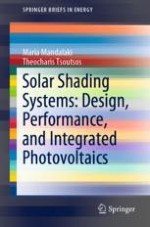2020 | OriginalPaper | Buchkapitel
6. Remarks on Shading Systems
verfasst von : Maria Mandalaki, Theocharis Tsoutsos
Erschienen in: Solar Shading Systems: Design, Performance, and Integrated Photovoltaics
Aktivieren Sie unsere intelligente Suche, um passende Fachinhalte oder Patente zu finden.
Wählen Sie Textabschnitte aus um mit Künstlicher Intelligenz passenden Patente zu finden. powered by
Markieren Sie Textabschnitte, um KI-gestützt weitere passende Inhalte zu finden. powered by
